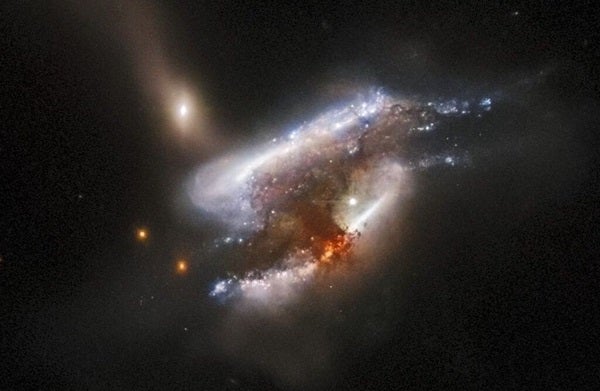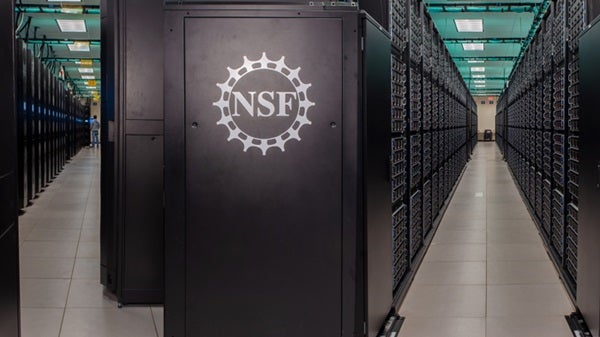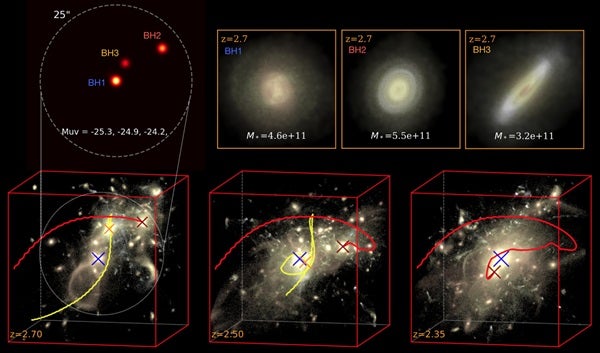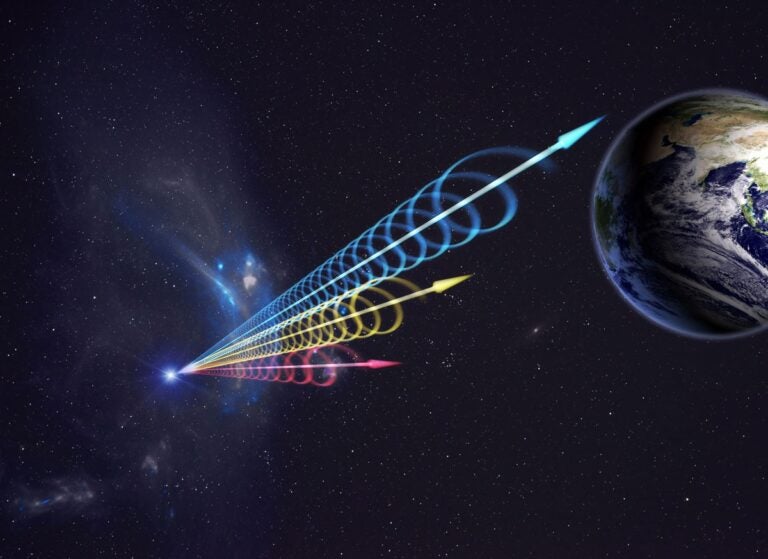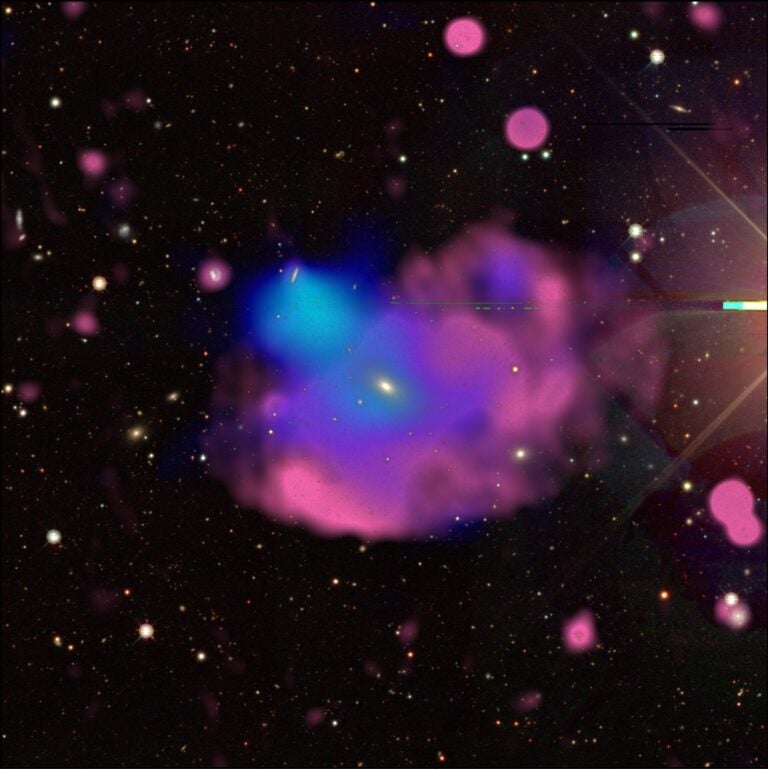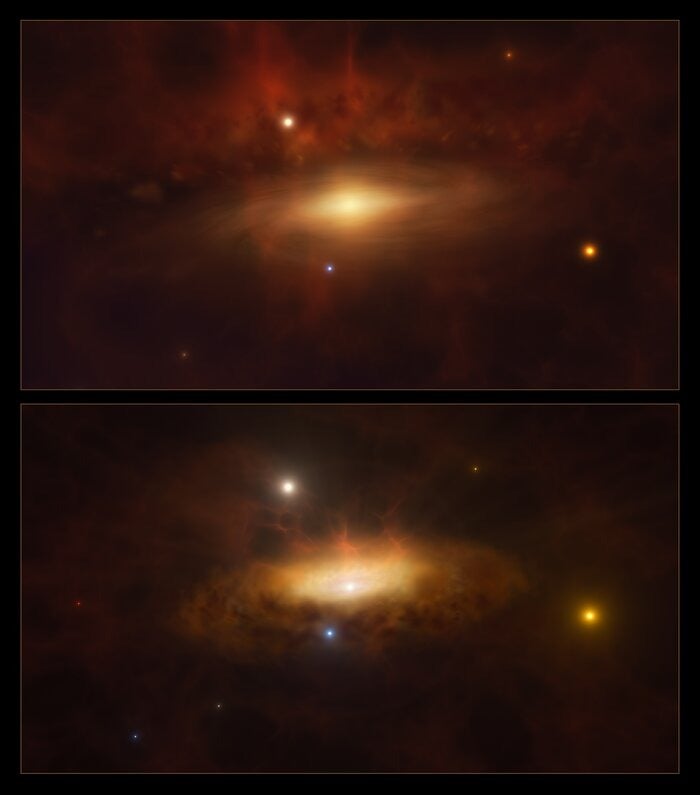With a gravitational field so strong that not even light can escape its grip, black holes are probably the most interesting and bizarre objects in the universe.
Due to their extreme properties, a theoretical description of these celestial bodies is impossible within the framework of Newton’s classical theory of gravity. It requires the use of general relativity, the theory proposed by Einstein in 1915, which treats gravitational fields as deformations in the fabric of space-time.
Black holes are usually formed from the collapse of massive stars during their final stage of evolution. Therefore, when a black hole is born, its mass does not exceed a few dozen solar masses.
However, once formed, a black hole begins absorbing the matter around it. And if it resides at the center of a galaxy, where the density of matter is high, it can grow up to millions and even billions of solar masses, becoming a supermassive black hole. Our Milky Way also hosts such a black hole called Sagittarius A*, which is more than four million times heavier than the Sun.
Although Sagittarius A* is a giant compared to any other object in our galaxy, it is dwarfed by some other known black holes called ultramassive, which are tens of billions of times the mass of the Sun. While staggering, these behemoths pose a serious challenge for scientists. The problem is that according to the current theory of the formation and evolution of galaxies, no black hole should have had enough time to gain such a huge mass, even if it formed shortly after the Big Bang.
To resolve this contradiction between theory and observations, researchers put forward a hypothesis, supported by certain astronomical data, that ultramassive black holes may form not during the evolution of a single galaxy, but as a result of the collision of two or even three heavy galaxies hosting supermassive black holes.
They believed that with such a merger, the black holes collide, forming one with a larger mass. And importantly, the rate of this larger black hole’s matter absorption is many times higher than that of its progenitors, allowing for the formation of an ultramassive black hole in a reasonable amount of time.
Searching for ultramassive black holes with simulations
Like any other hypothesis, this supermassive black hole merger theory needed to be tested. And to do that, a team of American astrophysicists led by Yueying Ni recently used a galaxy formation simulation she co-developed called Astrid, which is one of the largest cosmological simulations developed to date.
“The science goal of Astrid is to study galaxy formation, the coalescence of supermassive black holes, and re-ionization over the cosmic history,” said Ni, a postdoctoral fellow at the Harvard–Smithsonian Center for Astrophysics, in a Texas Advanced Computing Center (TACC) news release. “Astrid models large volumes of the cosmos spanning hundreds of millions of light-years, yet can zoom in to very high resolution.”
To run the simulation, the astrophysicists used TACC’s Frontera supercomputer, the most powerful academic supercomputer in the U.S. “Frontera is the only system that we performed Astrid from day one,” Ni said. “It’s a pure Frontera-based simulation.”
In the study, published Nov. 30 in The Astrophysical Journal, the group focused on a stage in the evolution of the universe that took place around 10 to 11 billion years ago. During this epoch, called ‘cosmic noon,’ the rates of star formation, as well as the accretion of matter by black holes, reached their peak.
“We found that one possible formation channel for ultramassive black holes is from the extreme merger of massive galaxies that are most likely to happen in the epoch of the ‘cosmic noon,’” said Ni.
In their simulations, the astrophysicists considered the evolution of 3,000 galaxies, which resulted in the formation of more than 700 black holes with masses more than 1 billion times that of the Sun. From this cosmic zoo, several triple galaxy systems hosting supermassive black holes stood out, and each of them eventually merged into one ultramassive galaxy.
“In this epoch, we spotted an extreme and relatively fast merger of three massive galaxies,” said Ni. “Each of the galaxy masses is 10 times the mass of our own Milky Way, and a supermassive black hole sits in the center of each galaxy. Our findings show the possibility that these quasar triplet systems are the progenitor of those rare ultramassive blackholes, after those triplets gravitationally interact and merge with each other.”
Black holes in the newly formed massive galaxies began to grow rapidly, and in just a few hundred million years (recall that the age of the universe is approximately 13.8 billion years), they reached masses of approximately 50 billion, 65 billion, and 100 billion solar masses, after which their growth significantly slowed down.
“What we found are three ultramassive black holes that assembled their mass during the cosmic noon, the time 11 billion years ago when star formation, active galactic nuclei, and supermassive black holes in general reach their peak activity,” said Ni.
The simulation result agrees very well with observations, since the largest known black holes have masses of about 40 billion to 65 billion solar masses. Moreover, not only the masses of ultramassive black holes, but also the structures and luminosities of the galaxies hosting them, match observations almost perfectly, making the study even more reliable.
Another interesting feature of the simulation is that the masses of the ultramassive black holes turned out to be very close to the theoretical maximum, after which the black hole should nearly cease absorbing matter from the accretion disk surrounding it. This further confirms both the accuracy of the computer simulations and the correctness of our theoretical understanding of how black holes interact with matter.
Finding ultramassive black holes in the future
Only a few ultramassive black holes have been discovered to date, so further observations are needed to test the accuracy of this formation model.
Fortunately, there are many existing and planned telescopes, such as the James Webb Space Telescope (JWST), and gravitational-wave detectors, such as LIGO and VIRGO, that should help researchers detect more black holes and better understand their properties. (LIGO and VIRGO can currently only detect mergers of smaller stellar-mass black holes, as these detectors are not capable of detecting gravitational waves from mergers of supermassive or ultramassive black holes.)
“In addition, the future space-based Laser Interferometer Space Antenna (LISA) gravitational-wave observatory will give us a much better understanding the how these massive black holes merge and/or coalescence, along with the hierarchical structure, formation, and the galaxy mergers along the cosmic history,” said Ni. “This is an exciting time for astrophysicists, and it’s good that we can have simulation to allow theoretical predictions for those observations.”
Moreover, Ni’s research group is planning to use these observatories and the Astrid simulations to study not only ultramassive black holes, but also the properties of active galactic nuclei (AGN) — compact, ultrabright regions thought to be powered by supermassive black holes — and the galaxies that host them.
“They are a very important science target for JWST, determining the morphology of the active galactic nucleus host galaxies and how they are different compared to the broad population of the galaxy during cosmic noon,” said Ni.
Reference: Y. Ni, T. Di Matteo, N. Chen, R. Croft, and S. Bird, “Ultramassive Black Holes Formed by Triple Quasar Mergers at z ∼ 2,” The Astrophysical Journal Letters (2022), DOI: 10.3847/2041-8213/aca160.

